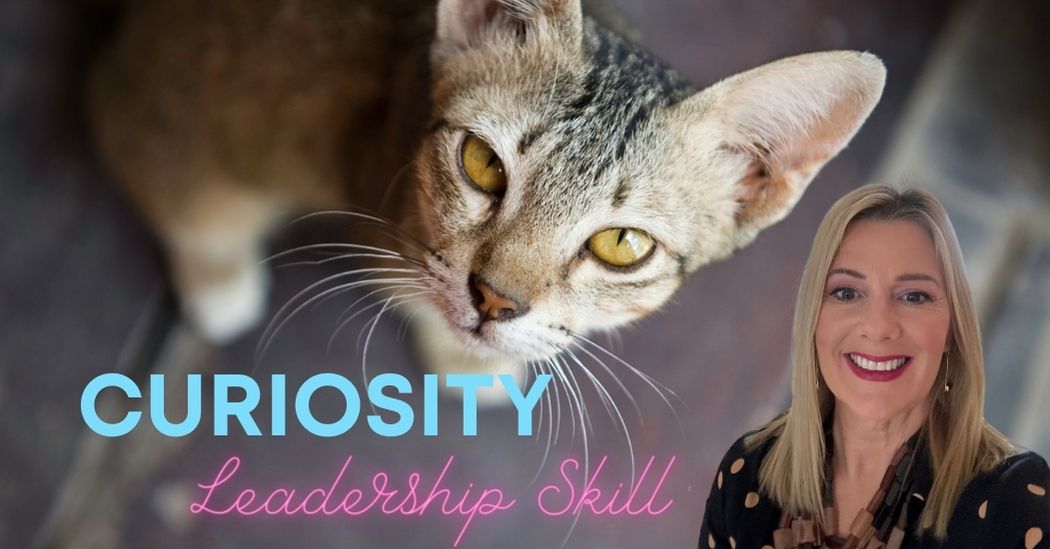The age-old saying claims that “curiosity killed the cat,” warning us against the perils of inquisitiveness. Ok so we all know this phrase is not meant to be taken literally but rather as a cautionary note against unnecessary investigation or prying into things that may lead to trouble or that do not concern you.
However, when it comes to leadership, we must challenge this notion and celebrate curiosity as a powerful and indispensable skill. Far from being detrimental, curiosity is the catalyst for innovation, growth, and effective leadership.
As a lifelong researcher, with Curiosity making up part of my DNA, I think this skill has served me well across my career, both as a researcher, business leader, and leadership mentor. Here are the main benefits that prove why Curiosity is a key leadership skill:
- Curiosity is the key to the cat’s survival: Curiosity is innate to all living beings, including felines. Cats are known for their inquisitive nature, which helps them adapt, learn, and navigate their environments. Similarly, leaders who embrace curiosity thrive in an ever-changing business landscape.
- Curiosity Fuels Learning and Adaptability: In the rapidly evolving landscape of the business world, maintaining a competitive edge requires adaptability. Leaders who embrace curiosity are consistently in pursuit of knowledge, exploring novel ideas, uncovering shifts in market dynamics and consumer behaviour, and adeptly adjusting their strategies to stay ahead.
- Curiosity Fuels Learning and Adaptability: Curious leaders are constantly seeking knowledge. The ability to ask questions, learn from experiences, and stay open to new information is what sets curious leaders apart.
- Innovation Springs from Curiosity: History is full of examples of groundbreaking innovations stemming from curious minds. Leaders who foster a culture of curiosity within their teams create an environment where innovative thinking flourishes. Curiosity propels individuals to challenge the status quo, explore possibilities, and create solutions to complex problems.
- Curiosity Enhances Problem-Solving: A curious leader approaches challenges with a sense of wonder and a desire to understand the root causes. Instead of merely addressing symptoms, they delve deep into the intricacies of issues, asking probing questions to uncover hidden complexities. This approach leads to more effective and sustainable solutions.
- Curiosity and Effective Communication: Curiosity isn’t just about seeking answers; it’s also about actively listening and understanding others. Leaders who cultivate curiosity enhance their communication skills, as they genuinely seek to comprehend different perspectives. This fosters a culture of inclusivity and collaboration within the organization.
- Curious Leaders Inspire Others: Leadership is not solely about issuing directives; it’s about inspiring and motivating others. Curious leaders lead by example, demonstrating a passion for learning and a hunger for knowledge. This enthusiasm is contagious, inspiring team members to embrace curiosity and pursue excellence in their roles.
“We keep moving forward, opening new doors, and doing new things, because we’re curious, and curiosity keeps leading us down new paths.” Walt Disney
In the realm of leadership, curiosity is not the culprit but the hero of the story. It propels leaders forward, driving them to seek knowledge, innovate, and inspire their teams. The curious leader navigates the complexities of the modern business landscape with a thirst for understanding, turning challenges into opportunities and fostering a culture of continuous learning and growth. So, let’s debunk the myth: curiosity didn’t kill the cat; instead, it gave it the tools to thrive in an ever-changing world. Similarly, curiosity equips leaders with the skills and mindset needed to navigate the challenges and uncertainties of leadership successfully.
If you’d like to learn more about developing your leadership skills or how to engage your teams through curiosity, then get in touch for a chat. I’m curious to see how I can help you!

